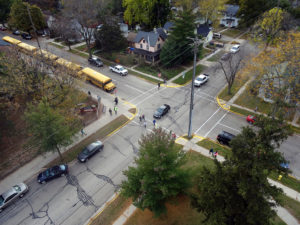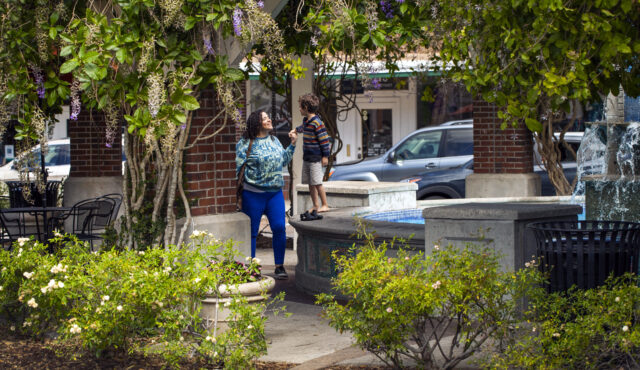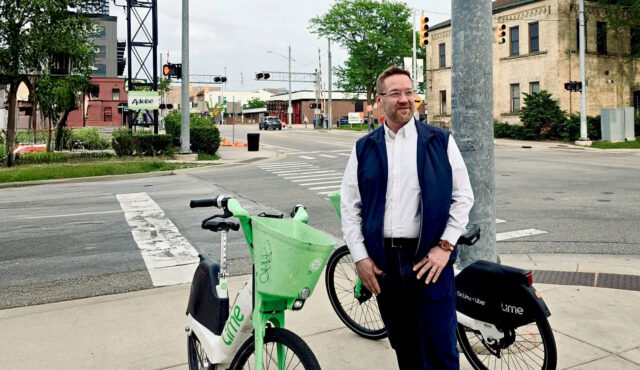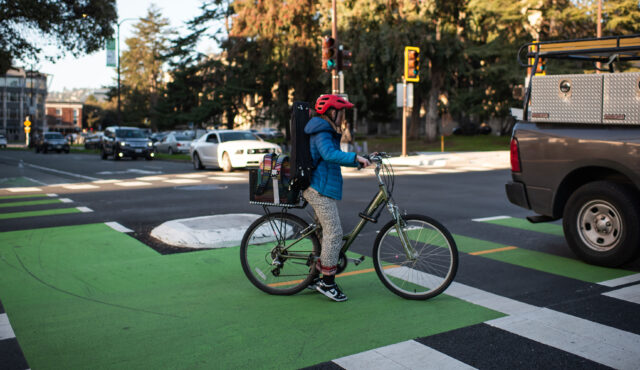The Infrastructure Investment and Jobs Act of 2021 (IIJA), approved by Congress on November 5th and signed into law by President Biden on November 15th, includes significant increases in funding for and changes to active transportation programs that will dramatically increase opportunities for safe routes to school (SRTS) infrastructure and non-infrastructure projects and programs.
The IIJA reauthorizes existing Federal transportation programs and establishes several new programs for which SRTS projects and programs are eligible. Below is a summary of relevant aspects of the legislation pertaining to SRTS.
SRTS was recodified into current law, but no dedicated funds were allocated to it.
The federal SRTS program was created in 2005 as part of the SAFETEA-LU transportation bill (Section 1404). The legislation allocated dedicated funding for states to hire a SRTS coordinator and fund infrastructure and non-infrastructure projects and programs. The two transportation bills that followed – MAP-21 and the FAST Act – eliminated the federal SRTS program and its dedicated funding source and instead made SRTS projects and activities eligible for Transportation Alternatives (TA) Set-Aside funding, which in turn is part of the Surface Transportation Block Grant program.
The IIJA signals support for SRTS by recodifying it in a new Section 208, which is subsequently referenced under both the TA Set-Aside program and the Highway Safety Improvement program. The new Section 208 re-introduced original text from SAFETEA-LU Section 1404 with the following changes:
- SRTS is expanded to explicitly include High Schools (i.e. K-12th grade),
- Tribal agencies are explicitly included as Eligible Recipients,
- Text related to establishing a Task Force and describing funding obligation, transferability and federal share has been eliminated.
SRTS remains eligible for funding in a bigger Transportation Alternatives Set-Aside
- Funding for the Transportation Alternatives Set-Aside program (TA Set-Aside) increases by about 60%; it goes from a flat $850 million reservation from the Surface Transportation Block Grant Program to a 10% set-aside from that program which comes to an average of $1.44 billion a year. Projects and activities described in the safe routes to school program under section 208 are eligible for TA Set-Aside funding.
- States may use up to 5% of TA Set-aside funding for staffing and technical assistance, which could include SRTS program staff if so desired
- Schools, school districts, a local education agency and non-profit entities are eligible for funding, in addition to local and regional governmental agencies.
- States may use federal Highway Safety Improvement Program funds to cover the 20% local match requirement for projects that improve safety.
- States are required to prioritize high-need communities in their TA Set-Aside application process. The definition of “high need” will be established by each state.
SRTS is eligible under the expanded Highway Safety Improvement Program
- Several highway safety improvement projects described in the Highway Safety Improvement Program (HSIP) align with SRTS infrastructure projects. Safe routes to school non-infrastructure activities are specifically referenced in the definition of a new “specified safety project” section of the legislation.
- States with high ped/bike fatality numbers (15% of more of their total) will be required to spend at least 15% of their HSIP funds on ped/bike safety projects in the following year.
SRTS can be funded from new programs
While not called out specifically as it is in the TA Set-Aside and HSIP, SRTS projects and programs are eligible for funding through several of the new programs in the IIJA, including these competitive grant programs to be established and administered by the US Department of Transportation. Each will have its own process, criteria, eligibility, call for applications, etc. to follow.
- $1 billion a year for a new Safe Streets and Roads for All grant program to support local initiatives to prevent death and serious injury on roads and streets
- $2 billion over five years for a new, competitive rural surface transportation program
Finally, it’s always worth remembering that all the individual elements of a successful SRTS program remain broadly eligible activities under many of the continuing funding programs administered by the States under the guidance of the Federal Highway Administration (infrastructure and planning) and National Highway Traffic Safety Administration (education, enforcement, and training). So, even if you don’t get to call it a SRTS program, project, or activity…it’s still worth pursuing funding.
Disclaimer
This is an initial assessment of a very complex piece of legislation. There are a lot more details to come, and there are a lot of other programs, reports, changes to program eligibility, etc. that are not included here. Check out updates via our Insight posts at www.tooledesign.com, follow us on social media, and sign up for our newsletter, if you don’t already receive it.





